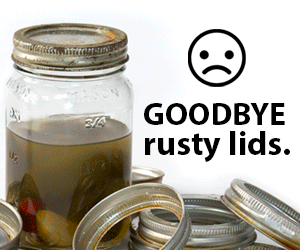Chickens can be the ultimate allies in creating a sustainable homestead. They not only provide eggs and meat but can also play a significant role in managing your compost pile. Composting with chickens is an effective way to reduce waste, save money on chicken feed, and improve the health of your soil. This comprehensive guide will show you how to get started and make the most out of this eco-friendly practice.
Why Compost with Chickens?
Chickens are natural foragers. They love to scratch and peck at the ground, digging up bugs and worms. This behavior can be harnessed to speed up the composting process.
Benefits for Your Chickens
The compost pile provides a rich source of food for your chickens. They can feast on food scraps, insects, and larvae, which are high in protein and calcium. This natural diet can contribute to healthier, happier chickens and higher quality eggs.
Benefits for Your Compost
When chickens scratch and peck at the compost pile, they help to turn and aerate the pile. This speeds up the decomposition process and results in a more uniform compost. Chicken manure, which is rich in nitrogen, is also a valuable addition to the compost.
Benefits for Your Homestead
Composting with chickens is a win-win situation for the homesteader. Not only does it provide a cheap and nutritious food source for your chickens, but it also helps to reduce waste and produce high-quality compost that can enrich your garden soil.
Getting Started with Composting with Chickens

Before you start composting with chickens, there are a few things you need to know.
What Can Chickens Eat?
Chickens are omnivores and can eat a wide variety of food scraps. Fruits, vegetables, grains, and even meat can be added to your compost pile. However, some foods should be avoided. You can find more information about what chickens can and cannot eat here.
Setting Up Your Compost Pile
Your compost pile should be easily accessible to your chickens but protected from other wildlife. It should be located in a well-drained area and can be enclosed with a simple fence or compost bin. The size of your compost pile will depend on the number of chickens you have and the amount of waste you produce.
The Intensive Composting Method

The intensive composting method involves actively managing your compost pile to speed up the decomposition process. This method can be more labor-intensive but can also produce compost more quickly.
Step 1: Gather Your Materials
The key to successful composting is a balanced mix of green materials (high in nitrogen) and brown materials (high in carbon). Green materials can include food scraps, grass clippings, and chicken manure. Brown materials can include leaves, straw, and wood chips.
Step 2: Build Your Compost Pile
Start by laying down a layer of brown materials. This will provide aeration and drainage for the compost pile. Next, add a layer of green materials and then a layer of brown materials. Continue this layering process until your compost pile is about 3 feet high.
Step 3: Let the Chickens Do Their Work
Allow your chickens to have free access to the compost pile. They will naturally start to scratch and peck at the pile, turning the materials and helping to speed up the decomposition process.
Step 4: Turn the Pile
After about a week, you will need to turn the compost pile. This involves moving the materials from the center of the pile to the outside and vice versa. This helps to ensure that all materials are decomposed evenly.
Step 5: Harvest Your Compost
After about 3-4 weeks, your compost should be ready to use. It should look like dark, crumbly soil and have a pleasant earthy smell.
The Passive Composting Method

The passive composting method involves less work but also takes longer to produce compost. This method is ideal for those with less time or who prefer a more hands-off approach.
Step 1: Set Up Your Compost Pile
Just like with the intensive method, start by gathering your materials and building your compost pile. However, with the passive method, you don’t need to worry so much about layering your materials.
Step 2: Let the Chickens Do Their Work
Give your chickens access to the compost pile and let them do their thing. They will naturally turn and aerate the pile as they search for food.
Step 3: Wait
The passive method requires patience. It can take several months to a year for your compost to be ready. However, the end result is worth the wait.
Step 4: Harvest Your Compost
When your compost is ready, it can be used to enrich your garden soil, improve the structure of your soil, and provide essential nutrients for plant growth.
Conclusion
Composting with chickens is a green solution that benefits your chickens, your compost pile, and your homestead. Whether you choose the intensive or passive method, you’ll be on your way to creating a sustainable, self-sufficient homestead.
















One Response